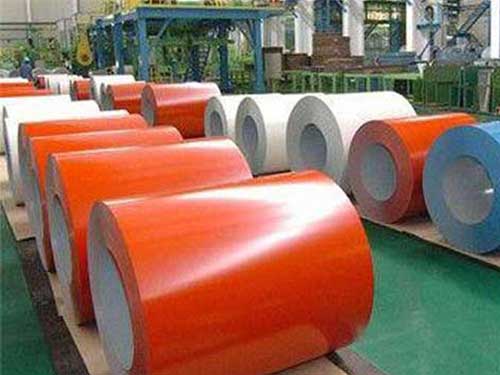Aluminum coil 3003 H18 H24 O Temper
In the realm of aluminum alloys, the Aluminum Coil 3003 stands as a beacon of versatility, corrosion resistance, and enhanced mechanical properties. Among its various tempers, H18, H24, and O hold distinct qualities that tailor this coil for multiple industrial applications. the intricacies of these temper designations, alloy composition, and implementation standards can unlock better material selection and performance customization.
What Makes Aluminum Coil 3003 a Preferred Choice?
The 3003 alloy belongs to the non-heat-treatable family of aluminum-manganese alloys, prized for strength improvement via cold working. Its fundamental appeal originates from an excellent balance of mechanical strength and corrosion resistance coupled with good workability.
The 3003 H18 and H24 tempers of aluminum coil are workhorses in our factory, predominantly used for applications requiring moderate strength and good formability. The H18, with its slightly softer temper, is favored for processes like deep drawing or spinning where significant deformation is needed. We often see it used in components requiring tighter tolerances, though the slightly lower strength means more careful handling during production to avoid deformation. I've noticed that subtle variations in the coil's internal stress from the mill can affect its performance in these processes, requiring adjustments to our tooling or forming parameters. Consistent quality from our supplier is paramount here, as even minor discrepancies can lead to significant scrap rates.
Conversely, the H24 temper finds its niche in applications demanding increased strength and rigidity, while still allowing for moderate forming operations. We frequently use it in components that need to withstand some level of bending or stretching without permanent deformation. However, pushing the H24 too far in forming operations can lead to cracking or other failures. A insight I've gained is the importance of proper lubrication during forming. Insufficient lubrication can lead to increased friction and premature material failure, particularly with the H24. Careful monitoring of tooling wear and surface finish is also crucial, as these can significantly impact the forming process and final product quality. Regular training for our operators on the nuances of these tempers is essential for maximizing efficiency and minimizing waste
For industries constantly balancing formability, durability, and resistance to environmental factors, this alloy emerges as a reliable candidate.
Temper Designations Explained: H18, H24, and O
The temper classification of aluminum alloys largely influences their mechanical performance. For Aluminum Coil 3003, the tempers reflect different degrees and methods of cold work and annealing.
- H18 Temper: Fully hard condition. The material has been cold worked to its maximum hardness without any subsequent annealing, delivering high strength but reduced ductility.
- H24 Temper: Quarter hard condition. Intermediate strength offering some preparatory cold work, maintaining a balance between ductility and strength.
- O Temper: Annealed, fully softened state. Exhibits maximum ductility and excellent formability but with lower tensile strength. This temper is favorable when ease of forming takes priority.
Choosing the right temper predicates the coil’s suitability in stiff or soft structural configurations versus seamless forming applications.
Chemical Composition and its Implications
Below is the typical chemical composition (wt%) of the Aluminum 3003 alloy conforming to ASTM B218/B209 standards:
| Element | Minimum (%) | Maximum (%) |
|---|---|---|
| Aluminum (Al) | Balance | - |
| Manganese (Mn) | 1.0 | 1.5 |
| Copper (Cu) | - | 0.10 |
| Iron (Fe) | - | 0.7 |
| Silicon (Si) | - | 0.6 |
| Zinc (Zn) | - | 0.10 |
| Titanium (Ti) | - | 0.20 |
| Others | - | 0.15 |
Manganese serves as the essential alloying element enhancing corrosion resistance and strength without heavy reliance on heat treatment. The low amounts of impurities such as iron and silicon help maintain excellent surface quality, critical for architectural and decorative applications.
Standards and Quality Controls
Adhering to strict implementation standards is essential for performance consistency:
ASTM B209/B218 governs the aluminum sheet and coil manufacturing parameters, ensuring chemical composition limits, mechanical properties, and surface qualities.
AMS 4013 & AMS 4194 specify further the allowable tolerances in chemicals and ruggedness at certain tempers enhancing aircraft and automotive segment suitability.
Routine inspection of gauge thickness (typical coils vary 0.2 mm to 3.0 mm), width uniformity, and mechanical testing per temper assure compliance and customer confidence.
Mechanical Properties Parameter Table
| Temper | Tensile Strength (MPa) | Yield Strength (MPa) | Elongation (%) | Hardness (HV) |
|---|---|---|---|---|
| H18 | 190 - 220 | 160 - 200 | 2 - 4 | Approx. 90 |
| H24 | 150 - 180 | 120 - 150 | 6 - 10 | Approx. 70 |
| O | 95 - 120 | 45 - 70 | 20 - 25 | Approx. 35 |
These values highlight how working or annealing relates to strength trade-offs and elongation, precision guides for designers to optimally use the coils in fabrication.
Application Spectrum Guided by Temper Selection
H18 Temper: Used when higher mechanical strength is necessary such as roofing materials, gutters, vehicle fuel tanks or refrigerator parts where hardness outweighs ductility.
H24 Temper: Ideal for applications demanding moderate forming activities yet better strength like decorative panels, gutters, downspouts, and siding.
O Temper: Suited for extensive forming or complex bending typical for ornamental architecture, HVAC ductwork, and artwork involving hull forming.
Distilling the character of 3003 aluminum coil across its prominent tempers unlocks a palette of technical advantages harmonized with manufacturing precision and environmental endurance.
From the meticulously maintained manganese-enriched composition to ASTM-grade quality governance, the coil represents more than raw metal — it delivers adaptive versatility befit for sectors spanning aerospace to household construction.
the underlying temper science arms material engineers, architects, and fabricators to pinpoint the coil variant that satisfies strength, formability, and longevity criteria specific to any industrial or creative challenge.
Investing in Aluminum Coil 3003 with nuanced attention to H18, H24, and O tempers stands not only for superior alloy choice but for strategic performance longevity begging robust, innovative applications.
https://www.alusheets.com/a/aluminum-coil-3003-h18-h24-o-temper.html


